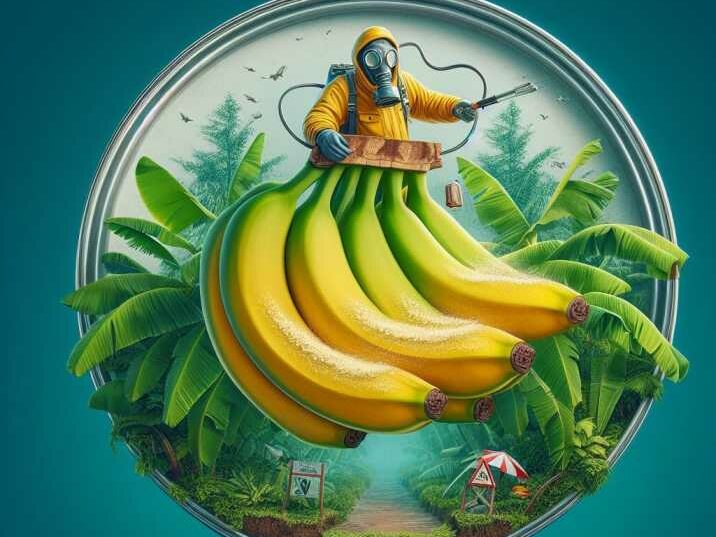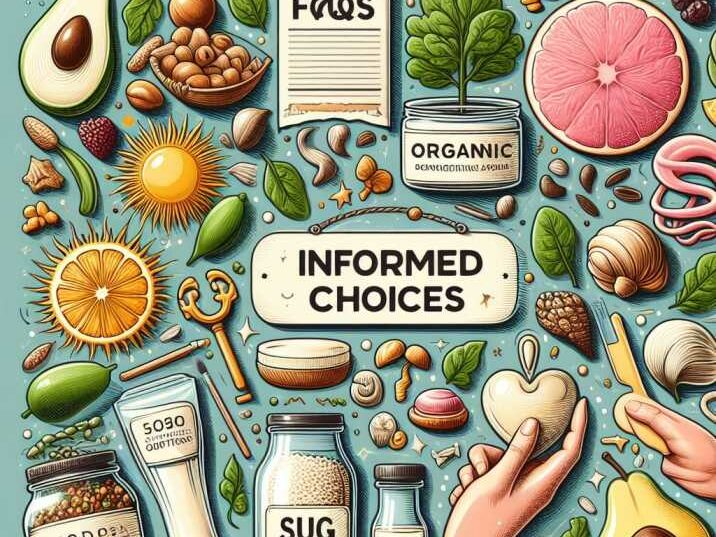Introduction:
Table of Contents
Are Cavendish bananas truly as harmless as they seem? In recent years, concerns have emerged regarding the potential health risks associated with consuming these popular fruits. One prominent worry revolves around health risks of consuming cavendish bananas and pesticide Exposure. As consumers, it’s crucial to delve into this topic to make informed decisions about our dietary choices. Let’s explore the facts and separate truth from speculation.
Understanding Cavendish Bananas:
Before delving into the potential health risks, let’s understand what Cavendish bananas are. These bananas belong to the Musa acuminata species and are one of the most widely consumed fruits globally. They are known for their creamy texture, mild flavor, and convenience as a snack or ingredient in various dishes.

The Role of Pesticides:
Pesticides are substances utilized to control pests, diseases, and weeds in agricultural practices. While they serve a crucial purpose in ensuring crop yields and quality, excessive pesticide use can pose health risks to consumers.
Health Risks of Consuming Cavendish Bananas and Pesticide Exposure:
Exposure to pesticides can lead to various health concerns, including:
- Residue Buildup: Pesticide residues may accumulate on the surface of fruits like Cavendish bananas during cultivation, potentially exposing consumers to harmful chemicals.
- Toxicity: Some pesticides contain toxic compounds that, when ingested in high amounts, can cause adverse effects on human health, ranging from mild symptoms to severe conditions.
- Long-term Health Implications: Chronic exposure to pesticides has been linked to long-term health issues such as cancer, neurological disorders, reproductive issues, and disruptions in the endocrine system.
Pesticide Regulation and Safety Measures:
To address concerns regarding pesticide exposure, regulatory agencies such as the Environmental Protection Agency (EPA) in the United States set maximum residue limits (MRLs) for pesticides on food products, including Cavendish bananas. These limits aim to ensure that pesticide levels in foods remain within safe thresholds for human consumption.

Table of Information Related to Cavendish Bananas and Pesticide Exposure:
| Information | Details |
|---|---|
| Common Name | Cavendish bananas |
| Scientific Name | Musa acuminata |
| Pesticide Use | Widely treated with pesticides during cultivation |
| Health Risks | Potential exposure to pesticide residues, which may lead to toxicity and long-term health implications |
| Regulatory Measures | Maximum residue limits (MRLs) set by regulatory agencies like the Environmental Protection Agency (EPA) to ensure safe pesticide levels |
| Safety Measures for Consumers | Opting for organic bananas, washing fruits thoroughly, and peeling off the skin to minimize pesticide exposure |
Conclusion:
While Cavendish bananas remain a popular and nutritious choice for many, it’s essential to be aware of the potential health risks associated with pesticide exposure. By staying informed, practicing cautious consumption habits, and exploring alternatives such as organic varieties, consumers can make healthier choices for themselves and their families. Remember, knowledge is power when it comes to safeguarding our well-being.
FAQs:
- Are all Cavendish bananas treated with pesticides?
- Yes, most commercially grown bananas, including Cavendish bananas, undergo pesticide treatments to control pests and diseases.
- Can washing Cavendish bananas remove pesticide residues?
- Washing fruits like Cavendish bananas under running water can help remove surface residues to some extent but may not eliminate all pesticide traces.
- Are organic Cavendish bananas a safer alternative?
- Organic bananas are grown without synthetic pesticides, making them a potentially safer option for those concerned about pesticide exposure.
- How can consumers minimize pesticide exposure from Cavendish bananas?
- Opting for organic or locally sourced bananas, washing fruits thoroughly before consumption, and peeling off the skin can reduce pesticide exposure.
- What are the potential symptoms of pesticide poisoning from Cavendish bananas?
- Symptoms may vary depending on the type and amount of pesticide ingested but can include nausea, dizziness, headaches, and in severe cases, respiratory or neurological issues.
